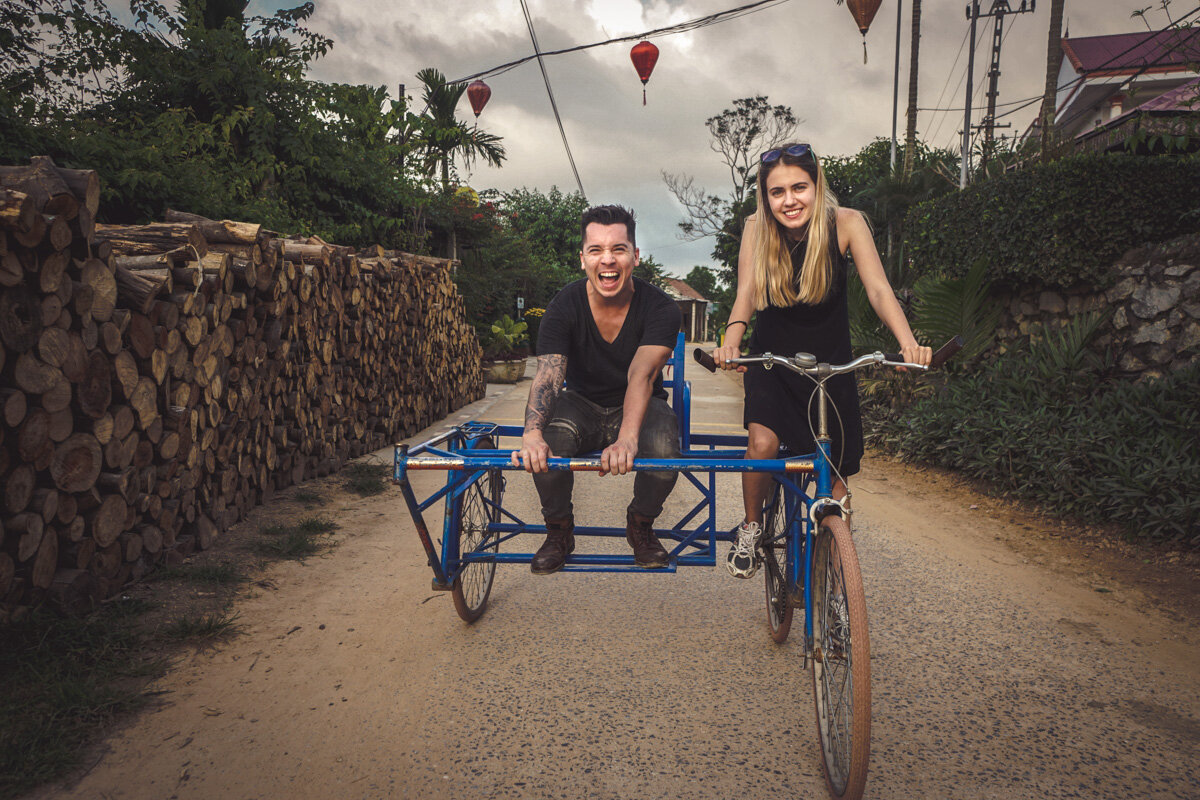Frosty Travels: Vacationing In A Cold Country For The First Time
/Frosty Travels: Vacationing In A Cold Country For The First Time
It’s common for hot climates to get the most tourists year round. People who live in milder, wetter climates move en masse towards areas where winter sun can be found in great supply. It's an awesome thing to spend a day at the beach in December without having to worry about catching an ocean chill!
But there’s a lot of people in the opposite camp as well. Traveling to a colder, more frosty climate is becoming more and more popular and it might be something you want to try. However, if you’ve never been to a typically cold country before, taking the ‘polar plunge’ might come as a real shock.
That’s why we’ve got some tips for you. Veteran travelers all around the globe recommend visiting cold countries for a few days and reveling in theri unique activities and ways of life. Don’t let yourself miss out on the vacation of a lifetime just because you need to wrap up warm!
Find Out the General Temperature Range Beforehand
No matter what cold country you’re off to, they’re going to have their own kind of climate that could mean some days aren’t too bad and some days are too freezing to head outside in. You need to know this ahead of time, so be sure to look up this general temperature range before you go.
You can do this on your phone using the weather app; just tap in the name of the town you’re staying in and see what it says over the next three to four days. You can also look up how deep their cold temperatures plunge, and what the average high temperature is. When it’s only mild out, visiting a beach or going for a hike won’t be too bad on the body.
Plus, the more you know about these extremes, the easier it’ll be to pack the right things for your frosty journey.
Take a Hardy Suitcase
Any bags you take into a cold climate are going to have a hard time keeping your belongings warm and dry inside. That’s why you want to look through something like the Travaloo catalogue and take a hardy suitcase along with you.
You’ll want something that is good in sub zero temperatures, even if it’s left out in the weather for a little while. Don’t mistake how often this happens when you’re transferring between airports, or when your bag is being loaded into the plane’s hold in the first place!
You’ll also want a case that’s quite roomy. You’re going to need to pack more layers than ever before, as well as those shoes we mentioned earlier. That might mean a bigger suitcase than you’ve ever had to pull along before, but it’s for a good cause.
A case with a hard front is good for this, but if you really want to pack light, take a reinforced carry-on bag with you. You can still fit multiple layers in here as long as you pack them in tight!
Pack Several Pairs of Grippy Shoes
You don’t want sandals, slides, or any other kind of shoe you wouldn’t usually wear when it’s raining outside. You’re going to want to wear shoes that have a good grip on the soles, a.k.a., the kind of shoes you can trust to walk on ice.
This usually means a couple good pairs of hiking boots should go in your case, so you shouldn’t need to buy any specialized sets that cost a lot of money.
If you’re planning to go glacier walking at any point during your vacation, it’s best to take along some crampons or buy a set once you’ve touched down. These provide excellent strength grip to ensure you don’t slip or fall when the ground beneath you isn’t quite meant for walking on!
If you don’t pack any or you forget to, don’t panic. If you’ve booked a tour round these kinds of icy areas, the guide working with you should bring along some spare sets you can attach to your boots.
Take a Coat That Keeps the Wind at Bay
Reaching for a coat you already own will probably be OK in a colder climate, but you need to be aware of just how dangerous wind chill can be. A day that’s only a few degrees above freezing can be made to feel upwards of 10 degrees below when you factor in the wind. To combat this, take along a coat that’s made to be wind resistant.
You can get a coat like this from any good hiking or outdoors store; they’re usually thin and/or fleece-like, meaning they can easily be put over the top of other layers.
Wind chill can be fatal if it’s not guarded against. Even when you’ve been wrapped up warm throughout your entire vacation, if you’ve never dealt with a strong wind coming in your direction before, there’s no guarantee your layering efforts will work. Buy a coat like this before you go and make sure you use it liberally.
Know the Symptoms of Hypothermia
Speaking of wind chill danger, you should also be aware of what hypothermia looks like. Otherwise you might not even be aware you’re in it until it’s too late. It’s a scary thought, but it’s one you should tackle now, just in case.
Unlike what most people think, shivering is a good thing for your body. It means you’re still trying to stay warm and your body is aware of just how cold the outdoor weather is. However, if you’ve been shivering for longer than 20 minutes, it’s time to head indoors or get back in the car and turn the heating on.
If your skin starts to turn a different color (usually blue) and you find you’re not all that cold anymore, this could be the starting stage of hypothermia. And when it comes to shivering, if you stop doing it despite never heading indoors or going anywhere warmer, it might be time to seek medical attention just in case.
Try to Stay Away From Water
If there’s a hot spa nearby and you’re desperate to try it, feel free to take a dunk (but make sure you don’t stay in for too long!). In countries like Iceland, public thermal springs are common and use is encouraged. Always check you’re OK to step in though!
On the other hand, if you feel like trying to swim in the ocean or a lake, it might be best to think twice. You don’t want to get wet when it’s freezing cold outside; you could soon freeze yourself, even if you’ve got a spare change of clothes and plenty of towels with you.
To be truly safe, only enter water when you’re indoors. Taking a bath or using the hotel hot tub isn’t a problem.
Cover Your Face as Much as Possible
Sometimes it’s going to be very cold outside, and any and all of your extremities are going to be at risk because of it. At times like this, when you step out and feel the unbearable cold across your hands and face, try to cover up as much as possible.
This won’t be hard when it comes to your hands - that’s why we have thermal, fleece lined gloves to make use of! But if you’ve never had to cover as much of your face as possible before, we’ve got a couple ideas for you.
First, pull your hat down as much as you can and then put your coat’s hood up over it. You can then use a scarf to cover as high as the bridge of your nose, just below the eyes. You shouldn’t cover your eyes, as you still need to see, but make this gap as close as you possibly can.
You can also use a wooly headband to cover your ears and provide an extra bit of warmth around the temples.
Rent a Car Made for Icy Roads
And finally, if you want to travel around as much of the country as possible, rent a car that’s been made for icy roads. You should be able to do this outside the airport.
These cars have a stronger suspension, off road tyres, and tend to be a four wheel drive. You can trust yourself out there in the snowy and icy conditions when you’re in a vehicle like this! Just be sure to take turns slowly, especially if vision is low.
Time to Head Somewhere Cold?
Vacationing in a cold climate can be very good for you. No annoying bitey bugs, you’ll get in a bit of extra cardio, and the coldest countries in the world have some of the most beautiful vistas to gaze over.
But if you’ve never been somewhere where the temperature drops below zero, you’re going to want to check out the list above. A cold country presents just as many dangers as a hot one, and wrapping up warm is only one of your worries!

















